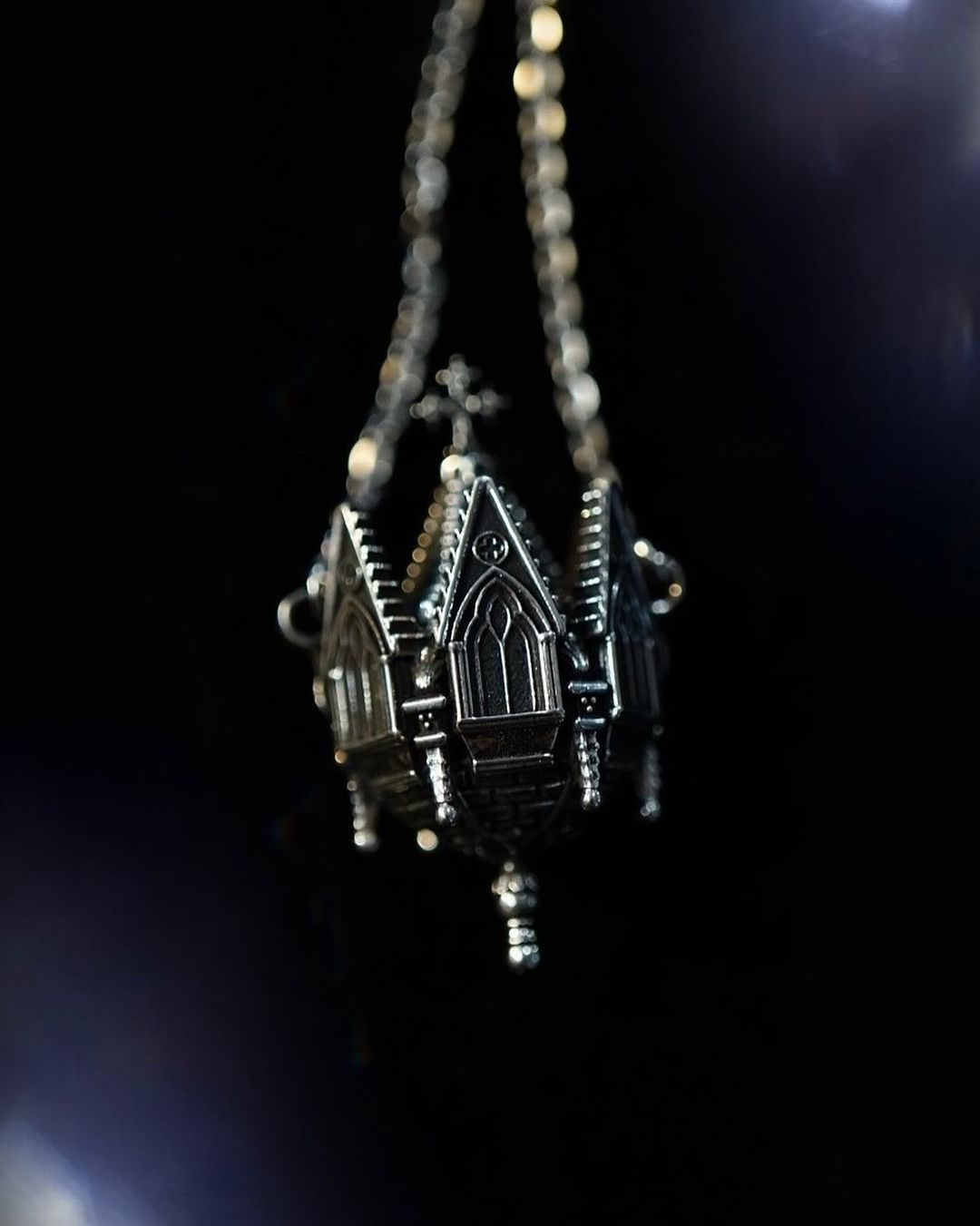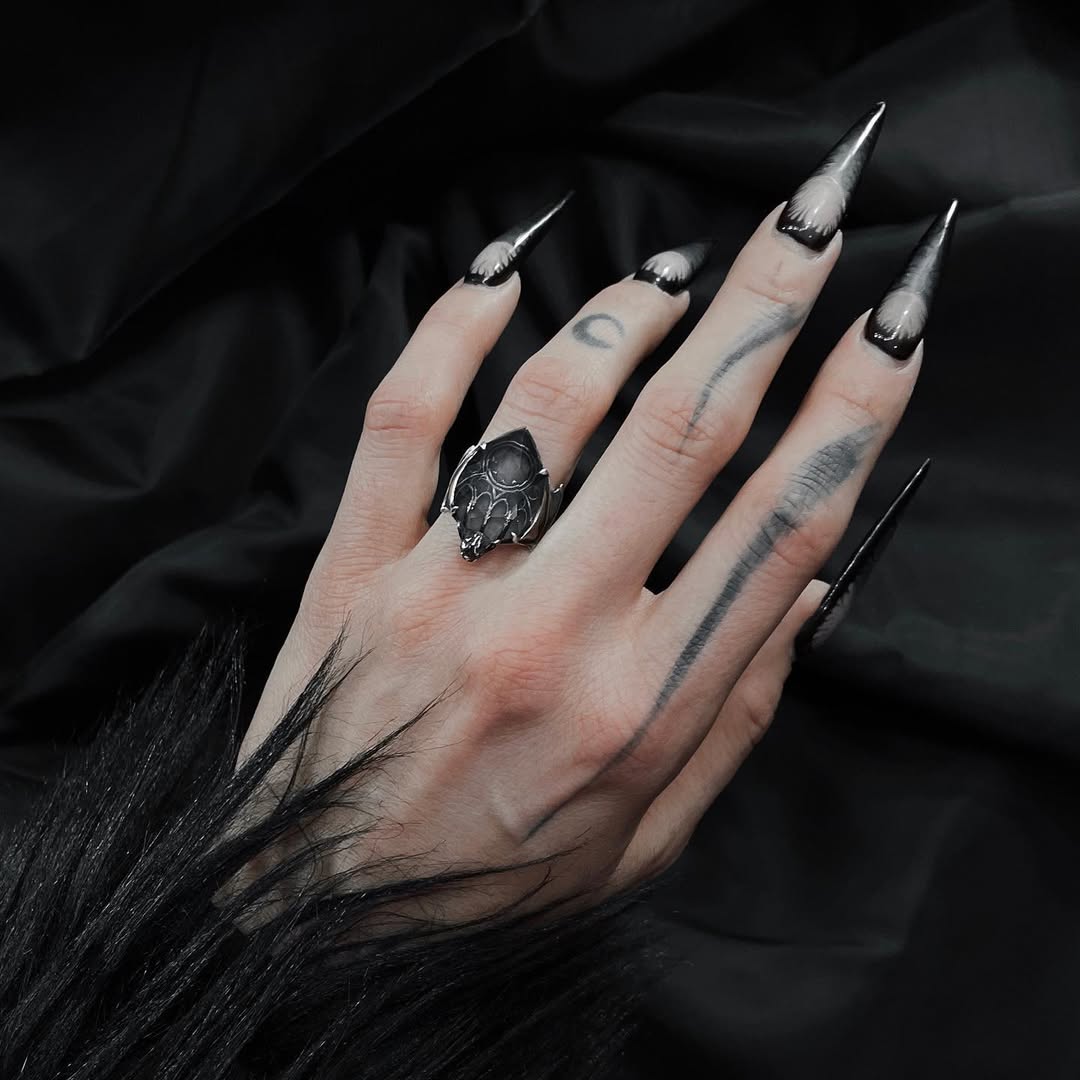b
Sempertarium
The dramatic and beautifully vivid jewelry of Saint Petersburg-based Sempertarium (by Olya Starvina) features Biblically accurate angels, bats, swords, and Victorian hands. Gothic cathedral arches are set in gemstones like glass, creating a brilliant, unique, and gorgeous effect. With their air of ecclesiastical splendor, Starvina’s jewels are both elegant and saturnine.


